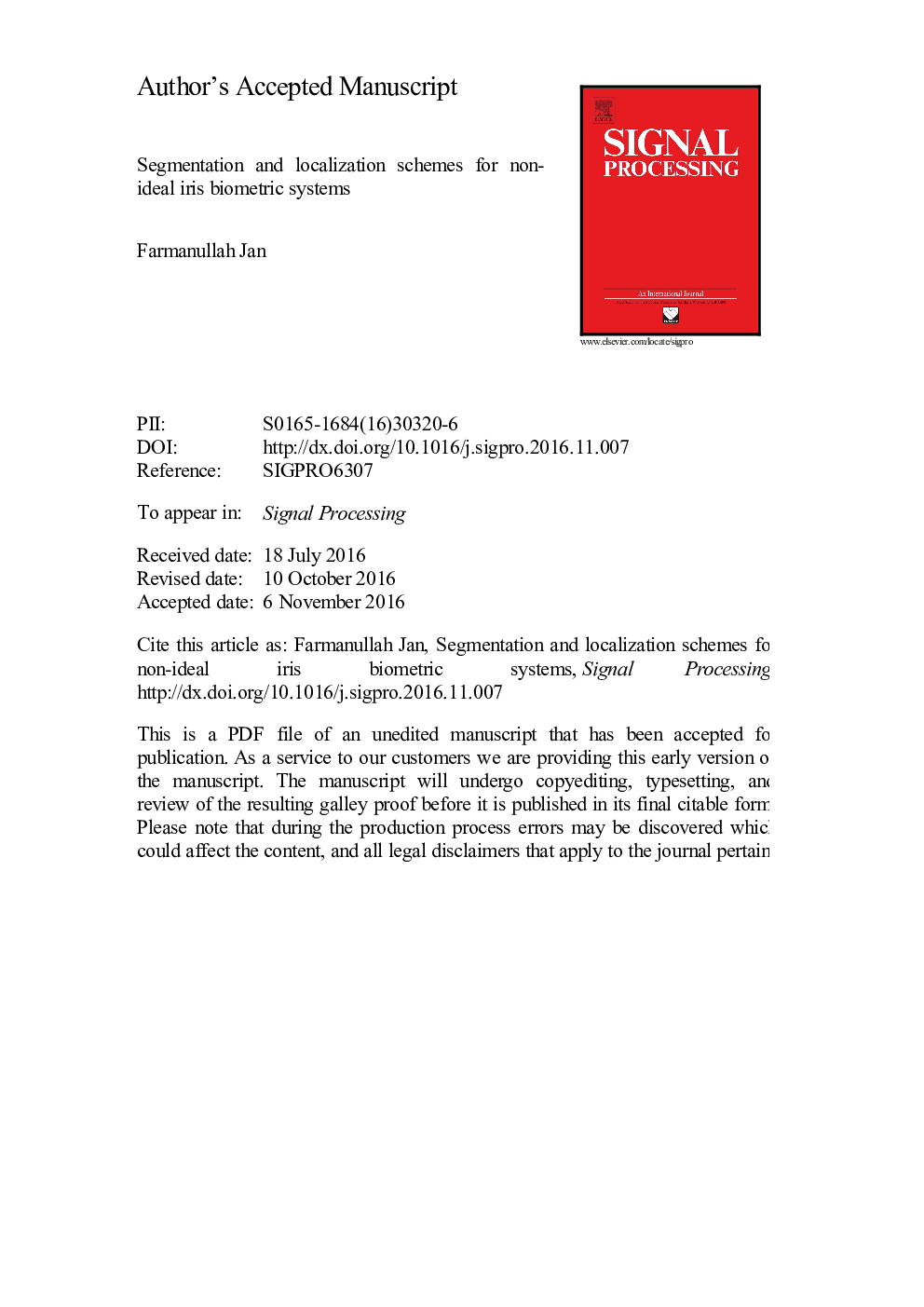| Article ID | Journal | Published Year | Pages | File Type |
|---|---|---|---|---|
| 4977690 | Signal Processing | 2017 | 56 Pages |
Abstract
Contemporary surveys focus on the ideal iris biometric systems, which are generally used for overt applications: e.g., border crossing control. Notably, these systems perform well for ideal data, but poorly for non-ideal data. It is because that their iris segmentation modules are generally developed for ideal data, which is acquired under controlled environment using the near infra-red (NIR) illumination only. On other hand, a subject could relatively be on-the-move and/or at-a-distance from the image acquisition device in non-ideal systems. Non-ideal systems use either the visible wavelength (VW) or NIR illumination while acquiring image data. Non-ideal images may contain noisy factors such as off-axis and off-angle eyeimages, non-circular iris boundaries, and non-uniform illumination. For secure and reliable security measures, non-ideal iris biometric systems are strongly desired around the globe in particular for the covert applications, e.g., monitoring the terrorist's activities. It is observed that literature encompasses research work from the prominent journals in this concern until 2010; therefore, this study includes significant publications following 2010 for both NIR and VW image data. Notably, the main objective of this survey is to offer a quick-reference regarding recent developments in non-ideal iris biometrics, supplemented with some indispensible prerequisites for beginners and professional researchers.
Related Topics
Physical Sciences and Engineering
Computer Science
Signal Processing
Authors
Farmanullah Jan,
